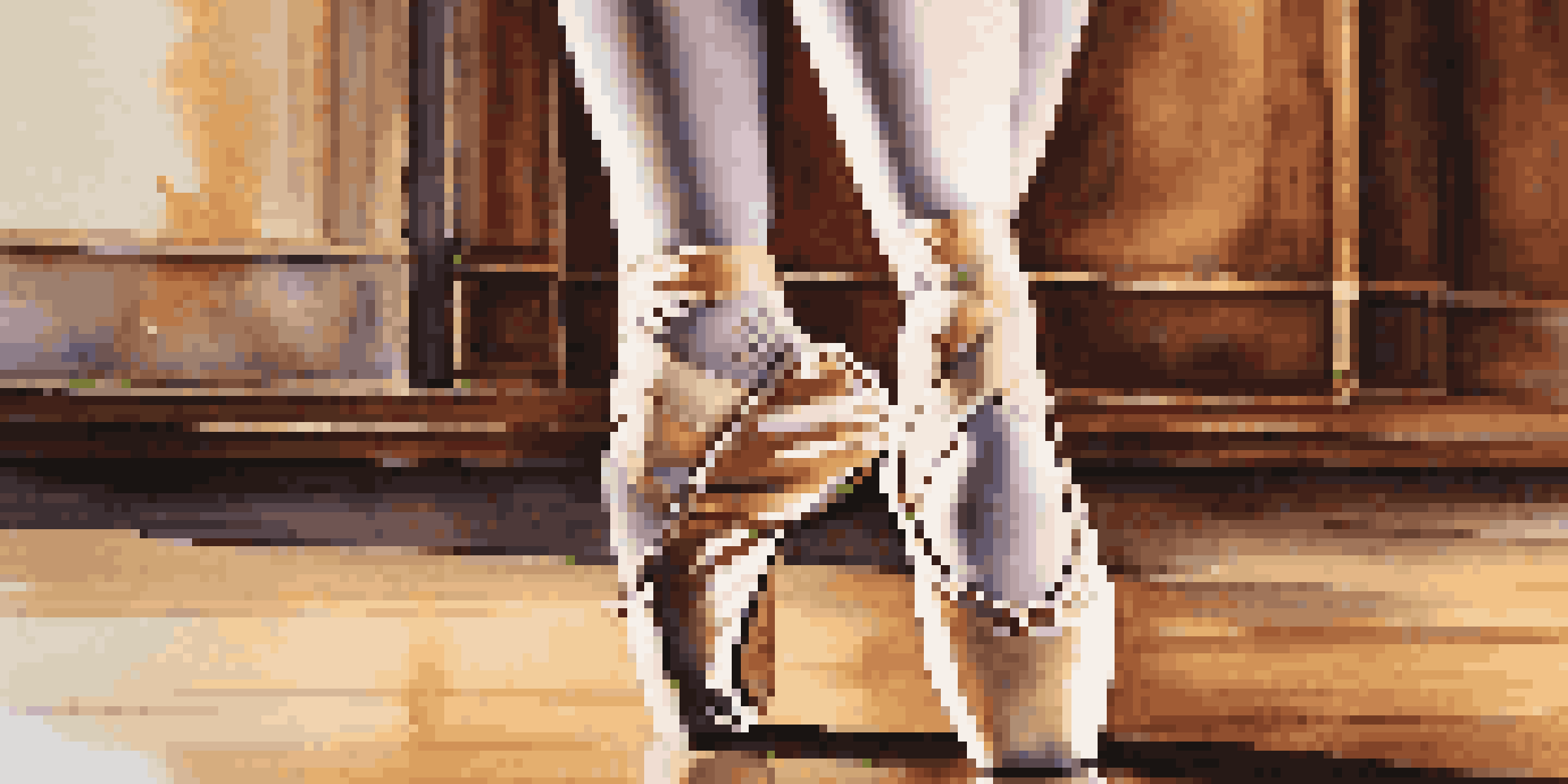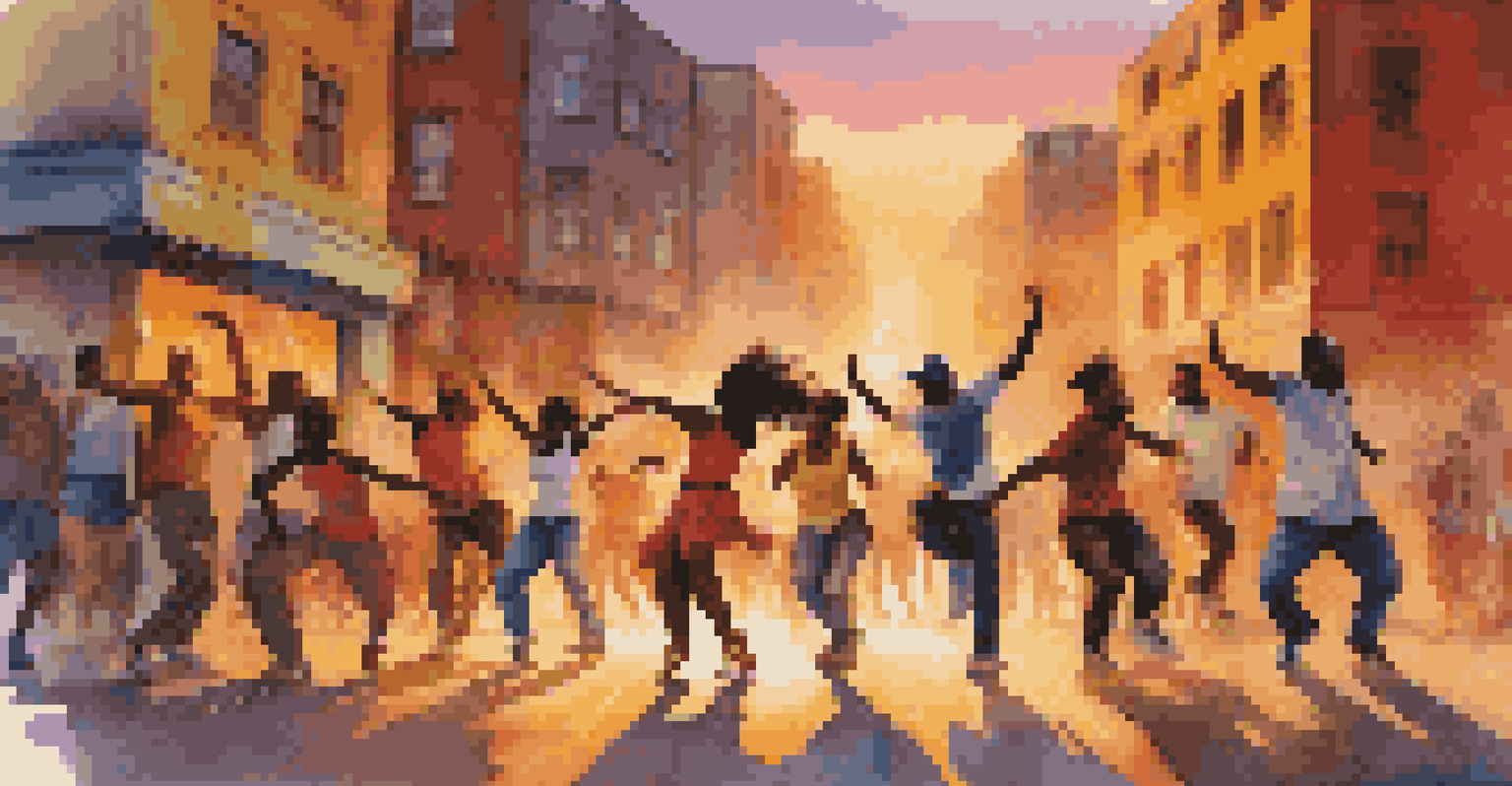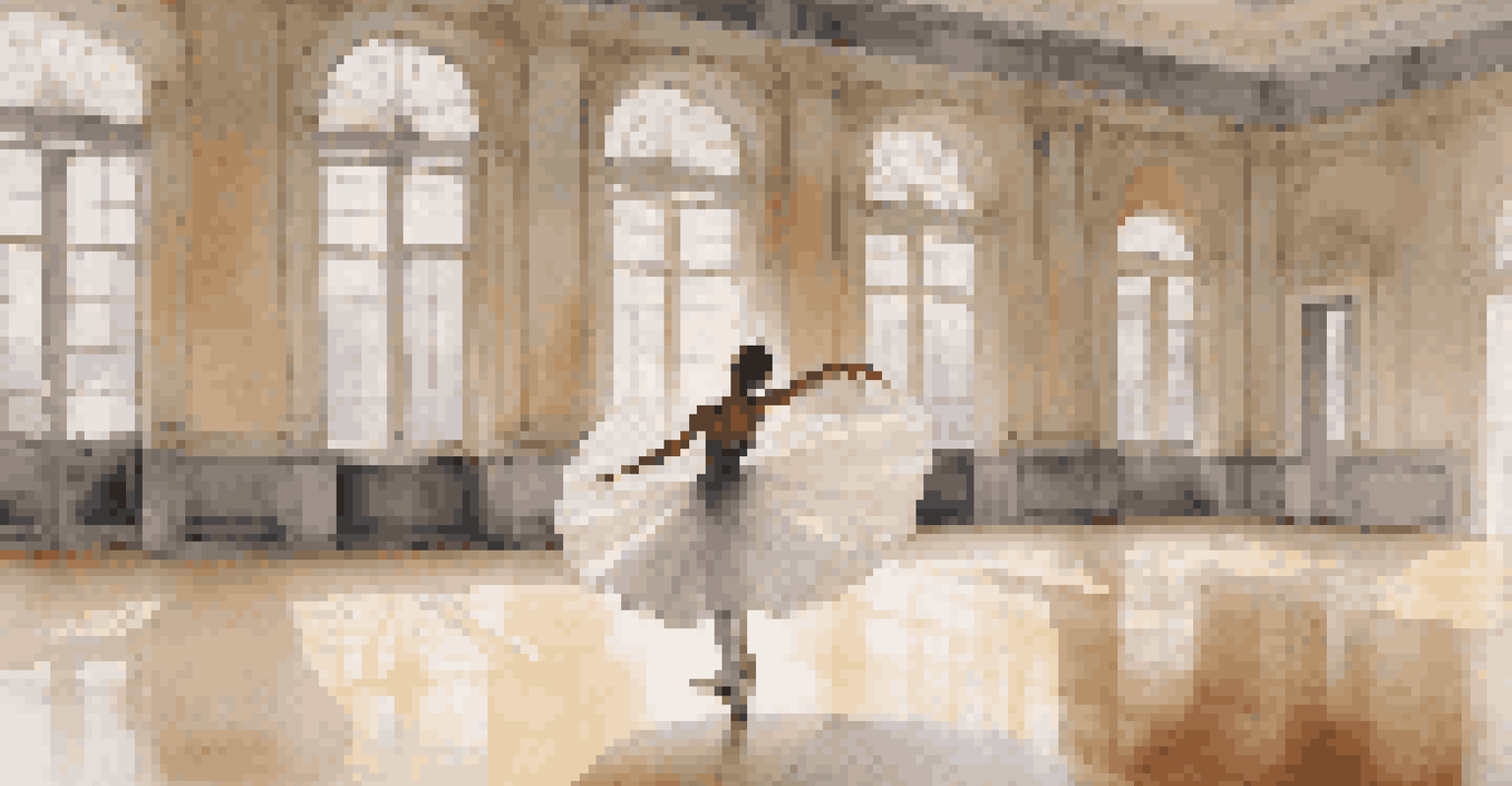The Portrayal of Dance in Documentaries: A Critical Analysis

Understanding Dance Documentaries and Their Purpose
Dance documentaries serve as a unique blend of art and storytelling, capturing the essence of movement and expression. They aim to provide viewers with an intimate glimpse into the lives of dancers, choreographers, and the creative process behind various performances. Through this lens, audiences can appreciate not just the skill involved in dance but also the emotional and cultural narratives that accompany it.
Dance is the hidden language of the soul.
Often, these films delve into the personal journeys of dancers, highlighting their struggles, triumphs, and dedication to the craft. This personal connection can make dance more relatable to viewers who may not have a background in the art form. By showcasing the stories behind the dancers, documentaries can transform the perception of dance from mere performance to a powerful means of communication.
Furthermore, the portrayal of dance in documentaries can reflect broader societal themes, such as identity, community, and resilience. This critical examination allows filmmakers to address important issues while celebrating the beauty of dance, making it a potent medium for both entertainment and education.
The Role of Cinematic Techniques in Dance Storytelling
Cinematic techniques play a crucial role in how dance is presented in documentaries, shaping the viewer's experience and emotional response. For instance, the use of close-ups can capture the intricate details of a dancer's movements, emphasizing the physicality and artistry involved. Conversely, wide shots can help convey the energy of a group performance, allowing audiences to appreciate the choreography as a collective expression.

Moreover, the editing style can significantly impact the pacing and rhythm of the documentary, mirroring the tempo of the dance itself. Quick cuts might enhance the excitement of a dance battle, while longer takes can create a meditative quality during a contemporary piece. These choices reflect the filmmaker's vision and understanding of dance as an art form, reinforcing the narrative they wish to convey.
Dance Documentaries as Storytelling
Dance documentaries provide an intimate look into the lives of dancers, showcasing their personal journeys and the emotional narratives behind performances.
In addition, sound design and music selection are integral to the storytelling process. The right soundtrack can elevate a dance documentary, creating an emotional backdrop that resonates with viewers. Through a thoughtful combination of visuals and audio, filmmakers can create an immersive experience that highlights the beauty and complexity of dance.
Cultural Representation in Dance Documentaries
Cultural representation is a significant aspect of dance documentaries, as they often explore the diverse origins and styles of dance around the globe. From traditional folk dances to contemporary street styles, these films can showcase the rich tapestry of cultural expression through movement. By doing so, they educate viewers about the historical and social contexts that shape various dance forms.
The body says what words cannot.
However, the portrayal of different cultures can sometimes lead to misrepresentation or oversimplification. It’s essential for filmmakers to approach these subjects with sensitivity and respect, ensuring that the voices of the communities being represented are heard. Collaborating with dancers and cultural experts can help create a more authentic narrative that honors the traditions and significance of the dance forms.
Ultimately, when done right, cultural representation in dance documentaries can foster appreciation and understanding among audiences. It can break down barriers, dispel stereotypes, and celebrate the beauty of diversity, highlighting how dance serves as a universal language that connects people across cultures.
The Impact of Dance Documentaries on Public Perception
Dance documentaries have the power to shape public perception of the art form, influencing how audiences engage with dance in their own lives. By humanizing dancers and showcasing their stories, these films can draw in viewers who might not typically seek out dance performances. This broader appeal can help cultivate a new appreciation for the art form, encouraging more people to attend live performances or participate in dance classes.
Moreover, documentaries can also challenge preconceived notions about dance, showcasing its versatility and relevance in contemporary society. They often highlight how dance intersects with various disciplines, including social justice, mental health, and community building. By presenting dance as a multifaceted art form, these films can inspire audiences to view it as a powerful tool for expression and change.
Cinematic Techniques Enhance Dance
The use of various cinematic techniques, such as close-ups and sound design, plays a crucial role in shaping the viewer's emotional experience and understanding of dance.
As people engage more with dance through the lens of these documentaries, they may develop a deeper understanding of its significance. This can lead to increased support for dance programs, funding for the arts, and a greater appreciation for the hard work that goes into the craft, ultimately benefiting the dance community as a whole.
The Evolution of Dance Documentaries Over Time
The evolution of dance documentaries reflects broader changes in filmmaking techniques, cultural attitudes, and the dance community itself. Early documentaries often focused on traditional forms, capturing performances in a straightforward manner. However, as the medium developed, filmmakers began to experiment with narrative styles, incorporating elements of drama, humor, and even personal anecdotes to create more engaging stories.
In recent years, the rise of digital platforms has also transformed how dance documentaries are created and consumed. With the ability to reach global audiences through streaming services and social media, filmmakers can now share their work with a wider audience than ever before. This shift has opened the door for more diverse voices and perspectives in dance documentaries, enriching the genre as a whole.
As we look to the future, the potential for innovation in dance documentaries is vast. With advances in technology, such as virtual reality and interactive storytelling, filmmakers can create immersive experiences that allow viewers to engage with dance in entirely new ways. This ongoing evolution ensures that dance documentaries will continue to captivate and inspire audiences for years to come.
Challenges Faced by Filmmakers in Dance Documentaries
Filmmakers creating dance documentaries often encounter unique challenges that can impact the final product. One of the primary hurdles is capturing the essence of movement on film, as dance is inherently dynamic and alive. Translating the fluidity and energy of a live performance into a static medium requires creativity and technical skill, often leading to a trial-and-error process for filmmakers.
Additionally, securing access to dancers, choreographers, and rehearsal spaces can present logistical challenges. Many dancers are balancing rigorous schedules, making it difficult to coordinate filming sessions. Filmmakers must be adaptable and resourceful, finding ways to work within these constraints while still telling compelling stories.
Cultural Representation in Dance Films
Authentic cultural representation in dance documentaries fosters appreciation for diverse dance forms while educating audiences on their historical and social contexts.
Finally, financial limitations can hinder the production of dance documentaries, as funding for the arts can be scarce. Filmmakers may need to rely on crowdfunding, grants, or partnerships to bring their projects to fruition. Despite these challenges, the dedication of filmmakers and their passion for dance often shine through, resulting in powerful documentaries that resonate with audiences.
The Future of Dance Documentaries in a Digital Age
As we navigate an increasingly digital world, the future of dance documentaries looks promising yet challenging. The rise of platforms like YouTube, Netflix, and Vimeo has democratized the distribution of film, allowing a wider range of dance stories to be told and seen. This accessibility can lead to a richer variety of documentaries that explore lesser-known dance forms and diverse narratives.
However, with this abundance of content comes the challenge of standing out in a crowded marketplace. Filmmakers will need to innovate and find unique angles to engage audiences, whether through compelling storytelling, stunning visuals, or interactive elements. The ability to create an emotional connection with viewers will be paramount in ensuring that dance documentaries continue to captivate.

Moreover, as technology continues to evolve, filmmakers have the opportunity to experiment with new formats and styles. Virtual reality and augmented reality could offer immersive experiences that allow viewers to step into the world of dance. As filmmakers push the boundaries of storytelling, the future of dance documentaries holds exciting possibilities that can redefine how we experience this beautiful art form.